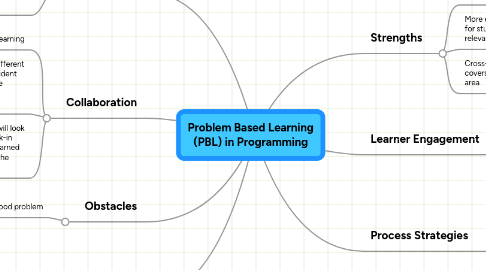Problem Based Learning (PBL) in Programming
作者:Mashite Tshidi


1. Teacher Role
1.1. Assist learners as they solve the problem
1.2. Help learners learn the skills necessary to solve the problem
2. Collaboration
2.1. Collaboration learning
2.2. Collaboration between learners: The students will offer different strengths to the process of solving the problem. Each student might come up with a piece of the solution, but the whole solution is dependent upon their individual ideas working together
2.3. Collaboration between student and teacher: Students will look to the teacher for guidance. The teacher needs to check-in with the student to ensure that the proper skills were learned to make sure the student stays focused on the goal of the assignment.
3. Obstacles
3.1. Creating a good problem
4. Technical Support
4.1. Provided by the instructor when students encounter problems
4.2. If the problem can't be solved by the instructor, someone at the help-desk may need to be contacted
5. Strengths
5.1. Meet many more standards
5.1.1. New node
